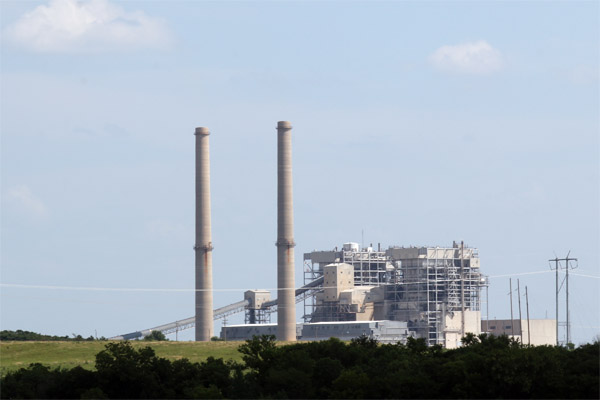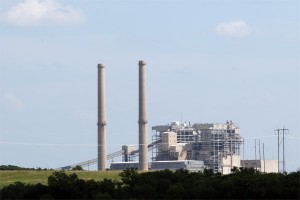
Oklahoma Gas & Electric's coal-fired Sooner Plant in Red Rock, Okla.
Joe Wertz / StateImpact Oklahoma


Oklahoma Gas & Electric's coal-fired Sooner Plant in Red Rock, Okla.
Joe Wertz / StateImpact Oklahoma

Joe Wertz / StateImpact Oklahoma
Oklahoma Gas & Electric's coal-fired Sooner Plant in Red Rock, Okla.
Despite its reliability and low cost, running a coal-fired power plant is getting more challenging.
New federal environmental regulations are forcing utilities to install expensive pollution-control upgrades, and coal is having to compete with the growth of natural gas and wind power.
As we reported in June, the state’s two largest utilities — Oklahoma Gas & Electric Co. and Public Service Co. of Oklahoma — have had split reactions to the federal coal crackdown. And as The Oklahoman’s Paul Monies reports, the two utilities have different ideas about the long-term role of coal:
Public Service Co. of Oklahoma wants to retire the last of its two coal units at Northeastern Station near Oologah by 2026.
Oklahoma Gas and Electric Co. wants to keep its two coal plants going, but the next power plant it builds likely will be fueled by natural gas. OG&E plans to put off building a new fossil-fueled plant until at least 2020, largely through energy efficiency and projects to reduce demand.
The percentage of Oklahoma electricity generated by coal is dropping, but it probably won’t disappear as a source fuel anytime soon, the paper reports.
OG&E and state Attorney General Scott Pruitt have gone to court to fight the federal Environmental Protection Agency’s regional haze plan, which was recently upheld by a federal appeals court in Denver …
OG&E and Pruitt have 45 days from the date of ruling to ask for a full hearing from the 10th U.S. Circuit Court of Appeals. Or they can ask the U.S. Supreme Court to review the case within 90 days of the ruling, said Pruitt spokeswoman Diane Clay.
… but the utility is planning to bring even more natural gas into the mix, the paper reports:
In the long term, OG&E wants to move toward a generating portfolio that will be majority natural gas by 2027. By 2042, the utility expects natural gas to provide almost two-thirds of its generation, according to an integrated resource plan it filed last year with regulators at the Oklahoma Corporation Commission.